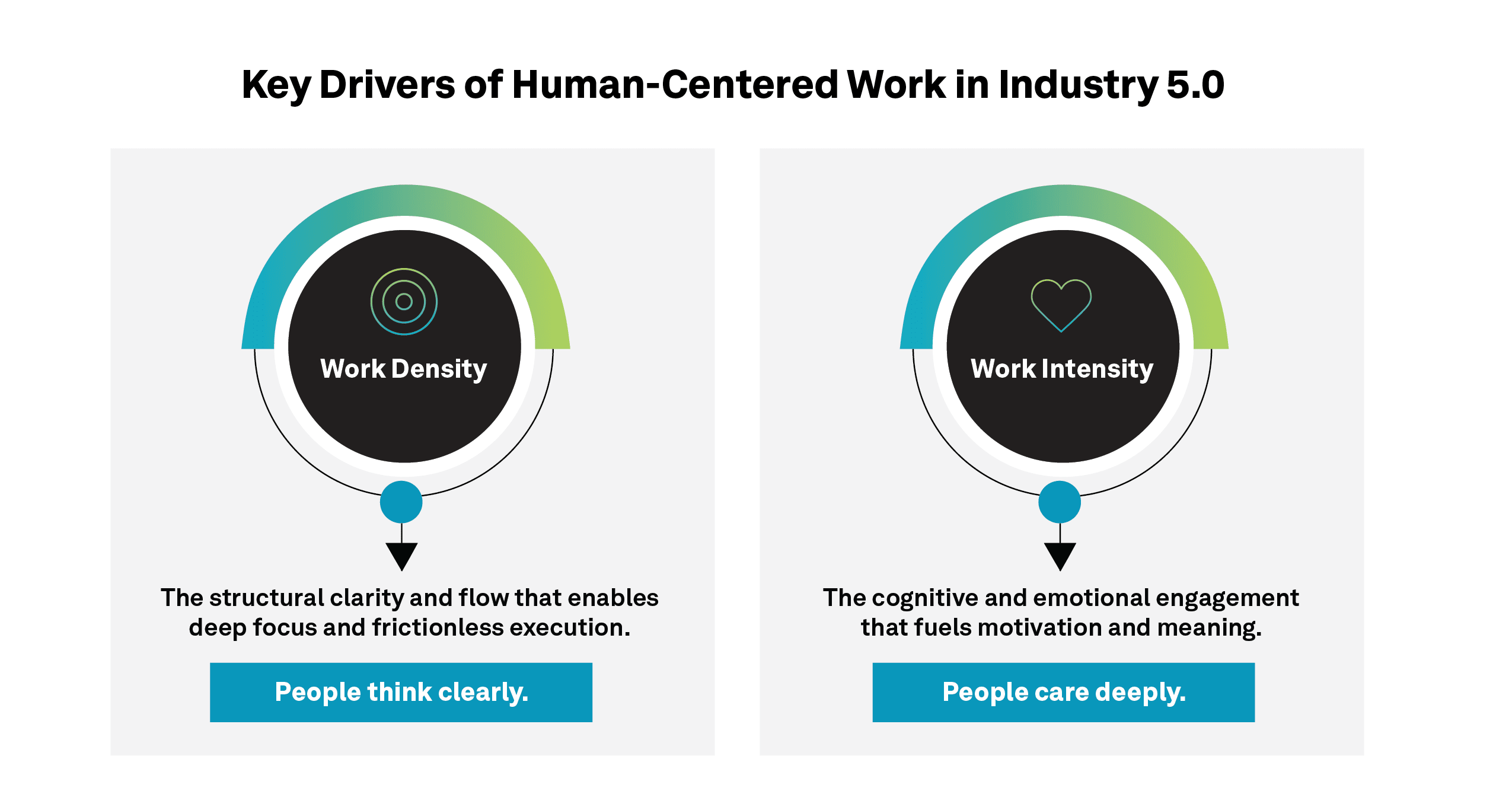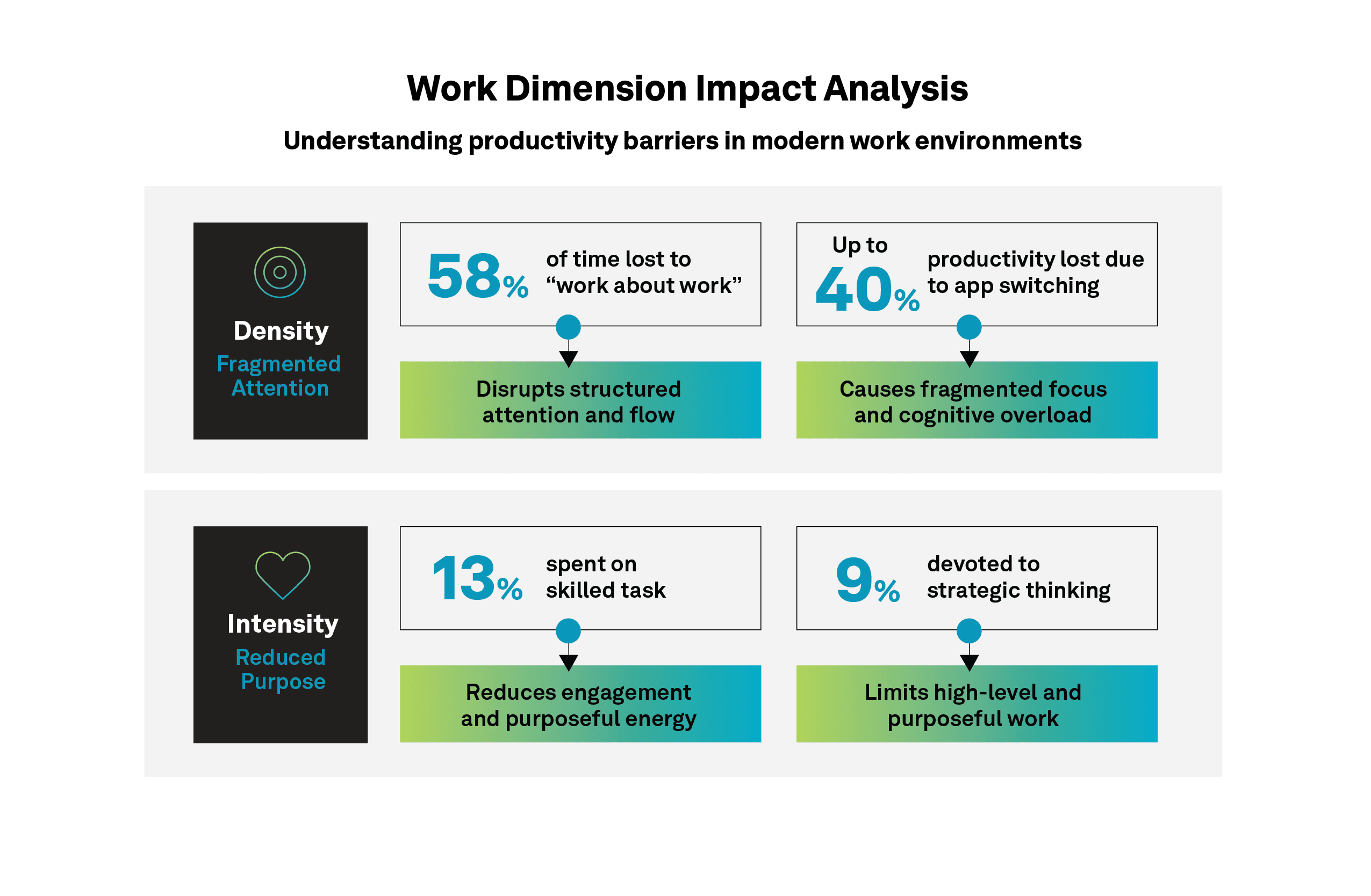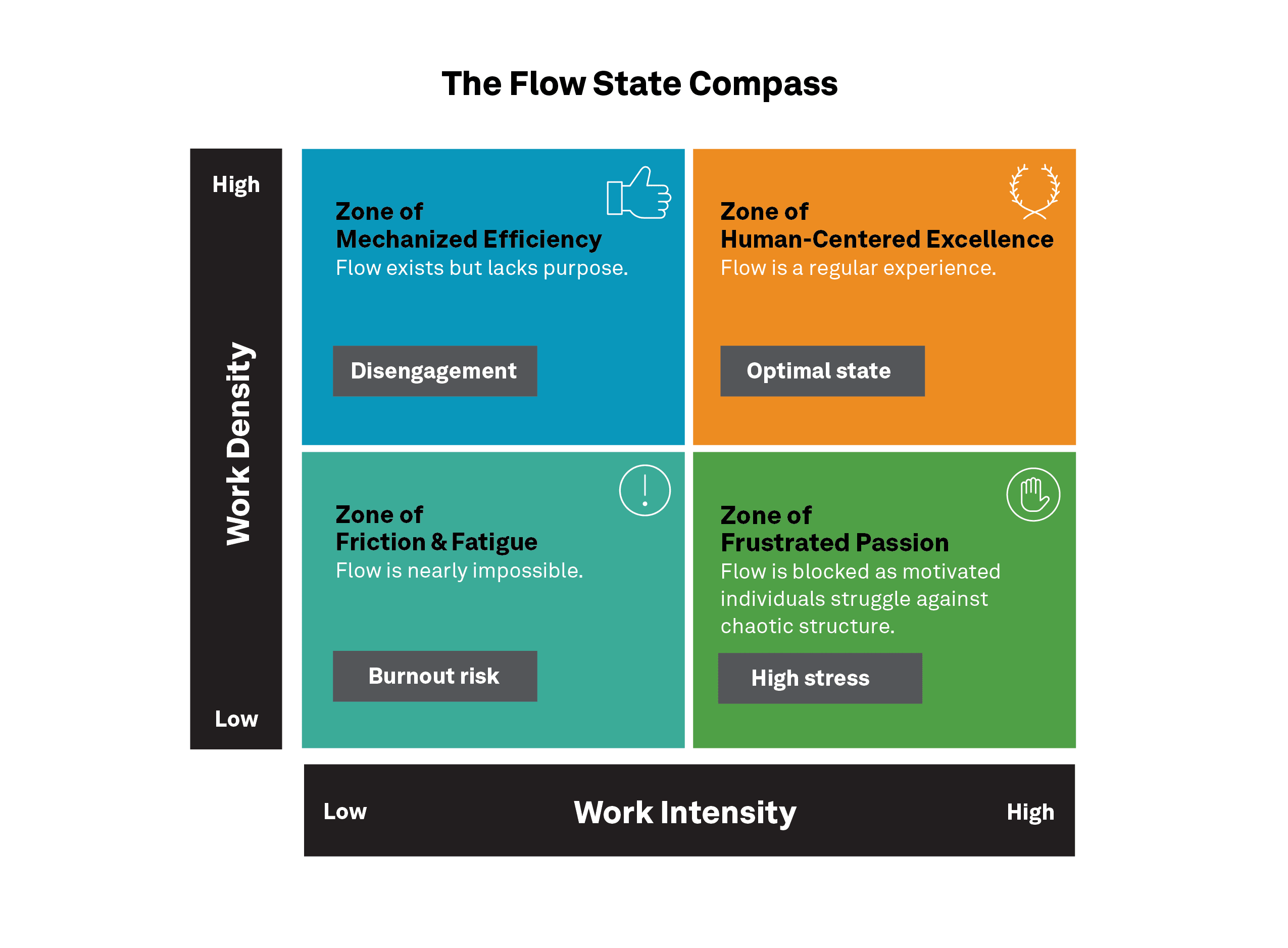Industry 5.0: Rebalancing Human Potential in the Age of Automation

The Promise and Limits of Industry 4.0
Industry 4.0 transformed industrial operations through automation, real-time analytics and digital connectivity. Its apex was the “lights-out factory”—a fully autonomous facility driven by robotics, machine learning and high-frequency data. This vision promised consistency, cost savings and safety.
Yet, in optimizing for efficiency, many systems inadvertently sidelined the very qualities that make industrial performance resilient: human adaptability, intuition and creativity. The pursuit of total efficiency exposed a paradox. Technically precise systems often struggle to handle unexpected conditions, ambiguity or novel problems without human intervention.
The Paradox of Automation
Industry 4.0 systems, often engineered by IT, engineering and operations teams, prioritized machine optimization over human empowerment. Connected workers became monitors of automation rather than drivers of value. Their roles narrowed, defined by digital workflows and reactive tasks, often serving as the human bridge to fully automated processes.
This shift delivered technical productivity but at a human cost:
- Cognitive Fragmentation: Constant alerts and context switching overload attention.
- Reduced Autonomy: Decision-making latitude diminished as processes became highly structured.
- Engagement Erosion: Skilled workers relegated to passive oversight, limiting pride and purpose.
Efficiency rose, yet innovation, resilience and long-term adaptability, all the capabilities rooted in human judgment, declined.
Integrating Impacts on Work Density and Work Intensity
During Industry 4.0, connected workers were embedded in core automated workflows designed to optimize industrial processes. While these systems improved efficiency and precision, they often disrupted the very human capabilities needed for focus, engagement and creativity.

Impacts on Work Density: Structure, Focus and Cognitive Load
Work density is the scaffolding of performance. It represents how well tasks are structured to support flow.
| Automated Workflow | Impact on Density | Future Human Role |
| Project Management Systems | Clarified priorities but caused overload and reduced autonomy | Strategic planning, prioritization and workflow design |
| Asset Management Platforms | Delivered precision but pulled workers into reactive loops | Predictive interventions, exception handling and resource allocation |
| Real-Time Data Systems | Increased visibility but generated constant noise | Analytical synthesis, trend identification and scenario planning |
Impacts on Work Intensity: Energy, Engagement and Purpose
Work intensity is the spark that ignites the cognitive and emotional energy that fuels contribution.
| Automated Workflow | Impact on Intensity | Future Human Role |
| Collaboration Tools | Amplified interruptions and performative communication | Facilitation, mentorship, creative problem-solving |
| Quality Management Systems | Bypassed human judgment, eroding pride and craftsmanship | Continuous improvement, coaching and process innovation |
These impacts suppress creativity, reduce motivation and disconnect workers from the purpose of their work. In short, the core workflows of Industry 4.0 were designed to optimize efficiency and precision and not promote or elevate human potential. To unlock both focus and engagement, connected worker solutions must enhance work density and work intensity, ensuring humans remain central to industrial performance.
A Human Counterbalance
History shows that every industrial revolution triggers a human renaissance. Mechanization required quality control and exposed the value of craftsmanship; Industry 4.0 revealed a similar need: re-centering human creativity, judgment and care at the core of digital operations. Automation alone cannot achieve sustainable performance or unlock human potential. In Industry 5.0, automation must work in partnership with humans.
Industry 5.0: Elevating Human Work
Industry 5.0 moves beyond pure automation toward true human-machine collaboration, elevating work that must remain human:
| Work Type | Examples |
| Insight-driven | Problem-solving, analysis, strategic decision-making and troubleshooting |
| Emotionally driven | Empathy, collaboration, nuanced judgment and creativity |
Technology is leveraged not to replace humans but to amplify uniquely human capabilities, enabling workers to contribute at a higher cognitive and strategic level.
Connected Worker Solutions: From Monitoring to Mastery
Industry 4.0 positioned humans as overseers. Their focus was to watch, react and navigate complexity from the sidelines. Industry 5.0 flips that script.
Connected worker solutions now elevate humans from passive monitors to active orchestrators of insight, creativity and impact:
- Real-time intelligence becomes strategic foresight. Workers don’t just receive alerts. Industry 5 requires higher-order skills to interpret patterns, anticipate disruptions and guide adaptive decisions that shape operations and innovation.
- Contextual data becomes creative fuel. Instead of reacting to fragments, workers synthesize across systems. Humans will reframe problems, explore scenarios and apply judgment in ambiguity.
- Automation becomes cognitive liberation. By offloading repetitive and data-heavy tasks, humans reclaim bandwidth for innovation, mentoring and cross-functional collaboration.
The Density–Intensity Dilemma
Modern workplaces face a paradox: technology boosts output but drains human energy. The 2023 Asana Anatomy of Work Index highlights:

These quantified inefficiencies clearly illustrate how technology-centric workflows strain cognitive, creative and emotional capacities, undermining both work density and work intensity. These metrics highlight how the two core drivers of human potential essential for thriving in Industry 5.0 positive work outcomes can be eroded when human needs are sidelined in favor of pure efficiency.
High-Leverage Drivers of Human-Centered Excellence
Work-design research reveals a powerful truth: a small set of job and task characteristics drives the majority of meaningful outcomes relative to work density and intensity. In connected-worker ecosystems, this insight points to four high-leverage design factors:

Applying the 80/20 heuristic, these four factors—just 20% of design elements—can account for 80% of a solution’s success. They are not merely features; they are force multipliers, amplifying both performance and engagement.
The Flow State Compass
The flow state compass maps work density against work intensity. The upper-right quadrant represents peak performance, where structure and engagement align to unlock human potential.

Conclusion: From Automated Efficiency to Human Energy
Industry 5.0 redefines productivity not as control, but as clarity, connection and care. By designing for high work density and work intensity, organizations unlock flow states that elevate innovation, resilience and well-being.
The future of industrial operations isn’t lights-out; it is lit by human insight. Machines ensure efficiency, humans define value and together they achieve outcomes neither could accomplish alone. Automation without human elevation is optimization without soul.
Learn more:
Blog: Strategic Content Management in the Age of Industry 5.0
Blog: Rethinking Content for Industry 5.0: Intelligent Infrastructure Must Replace Static Documentation
Webinar: Beyond Training: How to Build an Intelligent Performance Ecosystem